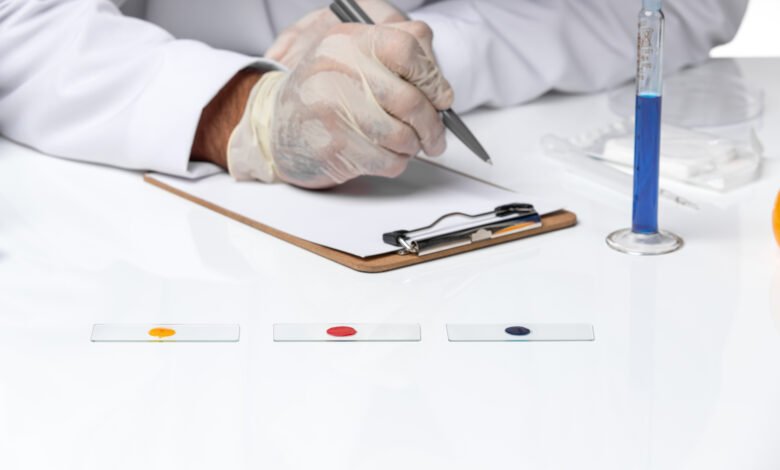What Tests Are Used to Diagnose IBD?

Inflammatory Bowel Disease (IBD) refers to a group of chronic conditions that cause inflammation in the digestive tract, primarily Crohn’s disease and ulcerative colitis. Symptoms like persistent diarrhea, abdominal pain, weight loss, and fatigue often lead individuals to seek medical attention. Since these symptoms overlap with other conditions, diagnosing IBD requires a systematic approach using various tests and evaluations. Here’s an in-depth look at the tests used to diagnose IBD.
1. Medical History and Physical Examination
The diagnostic process begins with a detailed medical history and physical examination. Doctors will ask about symptoms, their duration, and any family history of IBD or other autoimmune conditions. They’ll also inquire about lifestyle factors, dietary habits, and recent illnesses. A physical exam may include checking for abdominal tenderness, bloating, or rectal bleeding.
2. Blood Tests
Blood tests are crucial in identifying inflammation and ruling out other causes of symptoms. Key blood tests include:
- Complete Blood Count (CBC): Identifies anemia (common in IBD due to chronic blood loss or malabsorption) and elevated white blood cells, which indicate inflammation or infection.
- C-Reactive Protein (CRP): Measures levels of CRP, a marker of inflammation in the body.
- Erythrocyte Sedimentation Rate (ESR): Another inflammation marker that assesses how quickly red blood cells settle at the bottom of a test tube.
- Nutritional Markers: Tests for vitamin B12, iron, and folate deficiencies, which may result from malabsorption in IBD.
3. Stool Tests
Stool analysis helps differentiate IBD from other conditions like infections. Important stool tests include:
- Fecal Calprotectin and Lactoferrin: These proteins are elevated in stool samples of individuals with intestinal inflammation. Their presence strongly suggests IBD over irritable bowel syndrome (IBS).
- Pathogen Testing: Detects infections caused by bacteria, viruses, or parasites that may mimic IBD symptoms.
4. Imaging Studies
Imaging is essential for visualizing the digestive tract and assessing the extent and severity of inflammation. Common imaging techniques include:
- X-rays: Often used in emergencies to detect complications like bowel perforation or obstruction.
- CT (Computed Tomography) Scan: Provides detailed images of the abdomen and pelvis to identify inflammation, abscesses, or fistulas.
- MRI (Magnetic Resonance Imaging): Particularly useful for evaluating soft tissues and detecting fistulas or abscesses, especially in Crohn’s disease.
- Ultrasound: A non-invasive option to assess bowel wall thickness and detect inflammation or complications.
5. Endoscopic Procedures
Endoscopic techniques are the gold standard for diagnosing IBD, allowing direct visualization of the digestive tract and biopsy collection.
Colonoscopy
A colonoscopy examines the entire colon and rectum. It’s highly effective for detecting ulcers, inflammation, and bleeding. During the procedure, the doctor may take biopsies for histological analysis.
Sigmoidoscopy
This procedure examines only the lower part of the colon (sigmoid colon) and rectum. It’s less invasive than a colonoscopy but provides limited information.
6. Capsule Endoscopy
Capsule endoscopy involves swallowing a small, pill-sized camera that takes thousands of images as it travels through the digestive tract. It’s particularly useful for visualizing the small intestine, a challenging area to access with traditional endoscopes. Capsule endoscopy can help detect early signs of Crohn’s disease in the small bowel.
7. Balloon-Assisted Enteroscopy
This advanced technique allows deep access to the small intestine. It uses a special endoscope with a balloon system that helps maneuver the device through the bowel. It’s often used when capsule endoscopy reveals abnormalities that require biopsy or further evaluation.
8. Biopsy Analysis
During endoscopic procedures, tissue samples (biopsies) are collected from the intestinal lining. A pathologist examines these samples under a microscope to confirm inflammation, rule out infections, and distinguish between Crohn’s disease and ulcerative colitis. Biopsy findings are critical for a definitive diagnosis.
9. Serological and Genetic Tests
Certain blood tests and genetic markers can support an IBD diagnosis:
- Antibodies: Tests for pANCA (perinuclear anti-neutrophil cytoplasmic antibodies) and ASCA (anti-Saccharomyces cerevisiae antibodies) may help differentiate ulcerative colitis from Crohn’s disease.
- Genetic Testing: While not diagnostic, genetic testing can identify mutations associated with IBD, providing additional context for the diagnosis.
10. Differential Diagnosis
IBD shares symptoms with conditions like IBS, infections, celiac disease, and colorectal cancer. The diagnostic process often involves ruling out these alternatives through a combination of tests.
Conclusion
Diagnosing IBD is a complex, multi-step process involving medical history, physical examination, laboratory tests, imaging studies, and endoscopic evaluations. Each test plays a crucial role in confirming the diagnosis, assessing disease severity, and guiding treatment decisions. If you suspect IBD, consult a healthcare professional promptly. Early diagnosis and treatment can significantly improve quality of life and prevent complications.
Understanding the diagnostic tools for IBD can empower patients to engage in their healthcare journey, leading to better outcomes and effective management of this lifelong condition.




